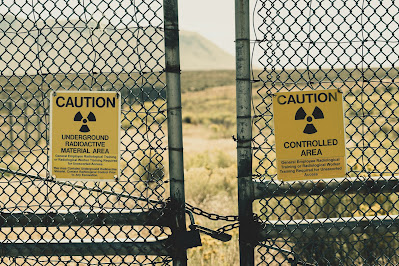Featured
- Get link
- X
- Other Apps
The Cultural Significance of Historical Artifacts
July 2023
The Cultural Significance of Historical Artifacts
Historical artifacts hold immense cultural significance as they provide valuable insights into ancient cultures and societies. These artifacts, which include tools, clothing, decorations, and more, offer researchers and historians essential clues about the past[1]. In this article, we will explore the cultural significance of historical artifacts and why it is important to preserve them.
## 1. Preserving History
Preserving historical artifacts is crucial in honoring our culture's past and ensuring that future generations can learn from and appreciate it[3]. These artifacts serve as tangible links to our ancestors and the events that shaped our world. By preserving them, we can continue to tell the stories of those who came before us and gain a deeper understanding of our cultural heritage.
## 2. Understanding Ancient Cultures
Historical artifacts provide valuable insights into ancient cultures and societies. They offer a glimpse into the daily lives, beliefs, and practices of people who lived centuries or even millennia ago. For example, ancient pottery can reveal artistic styles, technological advancements, and trade patterns of a particular civilization[6]. By studying these artifacts, researchers can reconstruct aspects of ancient cultures and gain a better understanding of their traditions, customs, and social structures.
## 3. Connecting Past and Present
Artifacts serve as bridges that connect the past and the present. They allow us to establish a connection with our ancestors and develop a sense of continuity with the past. By examining historical artifacts, we can recognize the shared experiences and values that transcend time and connect us to previous generations. This connection fosters a sense of identity and belonging, helping us appreciate our cultural roots and heritage.
## 4. Learning from History
Historical artifacts provide valuable lessons and insights that can inform our present and future. By studying the artifacts of past civilizations, we can learn from their successes, failures, and innovations. These artifacts can inspire creativity, problem-solving, and critical thinking by showcasing the ingenuity and resourcefulness of our ancestors. They remind us of the progress we have made as a society and the challenges we still face.
## 5. Challenging Perspectives
Artifacts have the power to challenge and expand our perspectives on history. They hold multiple stories and meanings, and their interpretation can vary depending on the context and the viewer[5]. Museums play a crucial role in presenting artifacts in a way that encourages diverse interpretations and viewpoints. By embracing different perspectives, we can gain a more nuanced understanding of history and foster dialogue and understanding among different communities.
## 6. Promoting Cultural Exchange
Historical artifacts also facilitate cultural exchange and understanding. They serve as ambassadors of a culture, allowing people from different backgrounds to learn about and appreciate the richness and diversity of human history. Museums and exhibitions that showcase historical artifacts provide opportunities for cross-cultural dialogue and appreciation, fostering mutual respect and understanding among different societies.
In conclusion, historical artifacts hold immense cultural significance as they provide valuable insights into ancient cultures, connect us to the past, and offer lessons for the present and future. Preserving and studying these artifacts is essential in honoring our cultural heritage, understanding our ancestors, and fostering a sense of identity and belonging. By appreciating and learning from historical artifacts, we can gain a deeper understanding of our shared human history and promote cultural exchange and understanding.
Citations:
[1] https://www.nationalgeographic.org/encyclopedia/artifacts/
[2] https://study.com/learn/lesson/cultural-artifact-social-examples.html
[3] https://www.brhoward.com/new-blog/2018/8/7/why-is-it-important-to-preserve-historical-artifacts
[4] https://en.wikipedia.org/wiki/A_History_of_the_World_in_100_Objects
[5] https://smithsonianeducation.org/idealabs/ap/essays/looking.htm
[6] https://www.metmuseum.org/toah/hd/angk/hd_angk.htm
Popular Posts

Why are Memories Forgotten?
- Get link
- X
- Other Apps

How is the Colour of a Lobster Determined?
- Get link
- X
- Other Apps

Can Sound Waves Solve Plastic Pollution?
- Get link
- X
- Other Apps

Can Animals Recognise Human Faces?
- Get link
- X
- Other Apps

Is the Earth Spinning Faster?
- Get link
- X
- Other Apps

Do plants sleep? The surprising science of sleep in the plant kingdom
- Get link
- X
- Other Apps

Can Bad Times Actually Improve Your Life? Surprising Benefits of Adversity
- Get link
- X
- Other Apps

Can Brain Implants Make You More Powerful?
- Get link
- X
- Other Apps

The Future of Space Tourism and Its Impact
- Get link
- X
- Other Apps

The Future and Potential of Nuclear Batteries
- Get link
- X
- Other Apps
Popular Posts

Why are Memories Forgotten?
- Get link
- X
- Other Apps

How is the Colour of a Lobster Determined?
- Get link
- X
- Other Apps

Can Sound Waves Solve Plastic Pollution?
- Get link
- X
- Other Apps

Can Animals Recognise Human Faces?
- Get link
- X
- Other Apps

Comments
Post a Comment